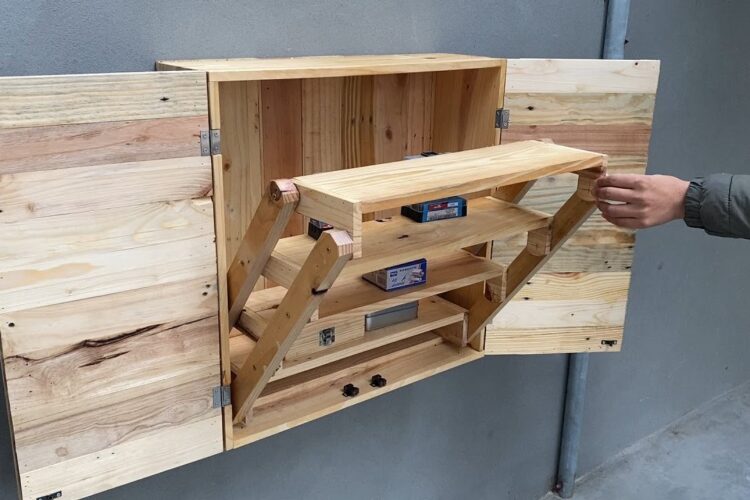
I. Introduction to Woodworking
II. Choosing the Right Wood for Your Project
III. Essential Tools and Techniques for Woodworking
IV. Adding Your Personal Touch: Customizing Your Woodworking Projects
Woodworking is a timeless craft that allows you to create beautiful and functional pieces using your hands, creativity, and a few tools. Whether you’re a seasoned pro or a beginner looking to try your hand at a new hobby, woodworking offers a rewarding and fulfilling experience that is sure to bring a sense of accomplishment with each project completed. Let’s dive into the world of woodworking and explore the basics of this craft that has captivated craftsmen for centuries.
Woodworking is an art form that involves shaping and manipulating wood to create various items such as furniture, cabinets, shelves, and decorative pieces. The possibilities are endless when it comes to woodworking, as you can let your imagination run wild and create pieces that are truly unique and one-of-a-kind. From intricate designs to simple and functional pieces, woodworking allows you to express your creativity and craftsmanship in a tangible and lasting way.
One of the key aspects of woodworking is choosing the right type of wood for your project. Different types of wood have varying characteristics, such as hardness, grain pattern, and color, which can greatly impact the final look and feel of your piece. It’s important to consider the intended use of the item, as well as your personal preferences, when selecting the type of wood to work with. Whether you prefer the rich tones of mahogany, the durability of oak, or the versatility of pine, there is a wood species that is perfect for your project.
In addition to choosing the right wood, having the essential tools and techniques is crucial for successful woodworking. From basic tools like saws, chisels, and sanders to more specialized equipment like routers and planers, having the right tools for the job can make all the difference in the quality and precision of your work. Learning how to properly use and maintain your tools is essential for safety and efficiency, so be sure to take the time to familiarize yourself with each tool before starting your project.
Once you have the right wood and tools, the fun part begins – customizing your woodworking projects to reflect your personal style and taste. Whether you prefer a rustic, farmhouse look or a sleek, modern design, adding your personal touch to your projects can make them truly one-of-a-kind. From intricate carvings and engravings to unique finishes and hardware, there are endless ways to customize your woodworking projects and make them uniquely your own.
In conclusion, woodworking is a rewarding and fulfilling craft that allows you to create beautiful and functional pieces that showcase your creativity and craftsmanship. By choosing the right wood, having the essential tools and techniques, and adding your personal touch to your projects, you can create pieces that are truly unique and reflective of your style and personality. So roll up your sleeves, grab your tools, and let your woodworking journey begin!
Choosing the Right Wood for Your Project
When it comes to woodworking, one of the most important decisions you’ll make is choosing the right wood for your project. The type of wood you choose can greatly impact the outcome of your project, so it’s essential to consider a few key factors before making your selection.
1. Consider your project: The first step in choosing the right wood is to consider the type of project you’re working on. Are you building a piece of furniture, a decorative item, or something else entirely? Different types of wood are better suited for different types of projects, so it’s important to choose a wood that will best fit your needs.
2. Understand the characteristics of different woods: Each type of wood has its own unique characteristics, including color, grain pattern, hardness, and texture. Some woods, like oak and maple, are known for their durability and strength, making them ideal for furniture and other heavy-duty projects. Others, such as pine and cedar, are softer and easier to work with, making them perfect for decorative items and smaller projects.
3. Consider the cost: The cost of wood can vary greatly depending on the type of wood you choose. Hardwoods like cherry and walnut tend to be more expensive than softwoods like pine and cedar. It’s important to consider your budget when selecting wood for your project, as the cost of the wood can significantly impact the overall cost of your project.
4. Think about the finish: The type of finish you plan to use on your project can also influence the type of wood you choose. Some woods, like cherry and mahogany, are known for their beautiful natural finishes and are often used in high-end furniture. Others, like pine and poplar, are more versatile and can be easily stained or painted to achieve the desired look.
5. Consider sustainability: If sustainability is important to you, it’s worth considering the source of the wood you choose. Look for woods that are certified by organizations like the Forest Stewardship Council (FSC), which ensures that the wood was harvested in a sustainable and environmentally responsible manner.
By considering these factors and taking the time to choose the right wood for your project, you can ensure that your woodworking project turns out beautifully and will stand the test of time. Whether you’re a beginner or an experienced woodworker, selecting the right wood is a crucial step in the woodworking process that should not be overlooked.
Woodworking is an incredibly rewarding and fulfilling hobby that allows you to create beautiful and functional pieces of furniture and decor. To get started on your woodworking journey, it’s essential to have the right tools and techniques at your disposal. Let’s dive into the world of woodworking tools and techniques to help you bring your projects to life!
**Essential Tools for Woodworking:**
1. **Measuring and Marking Tools:** Accurate measurements are crucial in woodworking. Invest in a good quality tape measure, combination square, and marking gauge to ensure precision in your projects.
2. **Cutting Tools:** A sharp and reliable saw is essential for cutting wood accurately. A handsaw, circular saw, or jigsaw are common options for cutting wood, depending on your project’s requirements.
3. **Joinery Tools:** Joinery is the art of connecting pieces of wood together. Tools like chisels, mallets, and a hand plane are essential for creating strong and seamless joints in your woodworking projects.
4. **Sanding and Finishing Tools:** Sanding is a crucial step in woodworking to achieve a smooth and polished finish. Invest in sandpaper of various grits, sanding blocks, and a finish like varnish or paint to protect and enhance the beauty of your woodwork.
**Techniques for Woodworking:**
1. **Safety First:** Before starting any woodworking project, prioritize safety. Wear appropriate safety gear such as goggles, ear protection, and a dust mask to protect yourself from potential hazards.
2. **Understanding Grain Direction:** Wood has a grain pattern that affects how it should be cut and worked with. Always pay attention to the direction of the wood grain to prevent tear-out and achieve a clean finish.
3. **Proper Cutting Techniques:** When cutting wood, ensure that your tools are sharp and properly aligned. Use a guide or fence to make straight cuts and take your time to avoid mistakes that could ruin your project.
4. **Precision in Joinery:** When creating joints in woodworking, accuracy is key. Take the time to mark your measurements carefully and use sharp tools to achieve tight-fitting joints that will ensure the strength and longevity of your project.
5. **Finishing Touches:** Sanding and finishing are the final steps in woodworking that can elevate the overall look of your project. Take your time to sand the wood evenly and apply a finish that enhances the natural beauty of the wood.
By mastering these essential tools and techniques for woodworking, you’ll be well on your way to creating stunning pieces that showcase your creativity and craftsmanship. Remember, practice makes perfect, so don’t be afraid to experiment and learn from your mistakes along the way. Happy woodworking!
“`html
Woodworking is an incredibly rewarding and fulfilling hobby that allows you to create beautiful and functional pieces of furniture and decor. To get started on your woodworking journey, it’s essential to have the right tools and techniques at your disposal. Let’s dive into the world of woodworking tools and techniques to help you bring your projects to life!
Essential Tools for Woodworking:
- Measuring and Marking Tools: Accurate measurements are crucial in woodworking. Invest in a good quality tape measure, combination square, and marking gauge to ensure precision in your projects.
- Cutting Tools: A sharp and reliable saw is essential for cutting wood accurately. A handsaw, circular saw, or jigsaw are common options for cutting wood, depending on your project’s requirements.
- Joinery Tools: Joinery is the art of connecting pieces of wood together. Tools like chisels, mallets, and a hand plane are essential for creating strong and seamless joints in your woodworking projects.
- Sanding and Finishing Tools: Sanding is a crucial step in woodworking to achieve a smooth and polished finish. Invest in sandpaper of various grits, sanding blocks, and a finish like varnish or paint to protect and enhance the beauty of your woodwork.
Techniques for Woodworking:
- Safety First: Before starting any woodworking project, prioritize safety. Wear appropriate safety gear such as goggles, ear protection, and a dust mask to protect yourself from potential hazards.
- Understanding Grain Direction: Wood has a grain pattern that affects how it should be cut and worked with. Always pay attention to the direction of the wood grain to prevent tear-out and achieve a clean finish.
- Proper Cutting Techniques: When cutting wood, ensure that your tools are sharp and properly aligned. Use a guide or fence to make straight cuts and take your time to avoid mistakes that could ruin your project.
- Precision in Joinery: When creating joints in woodworking, accuracy is key. Take the time to mark your measurements carefully and use sharp tools to achieve tight-fitting joints that will ensure the strength and longevity of your project.
- Finishing Touches: Sanding and finishing are the final steps in woodworking that can elevate the overall look of your project. Take your time to sand the wood evenly and apply a finish that enhances the natural beauty of the wood.
By mastering these essential tools and techniques for woodworking, you’ll be well on your way to creating stunning pieces that showcase your creativity and craftsmanship. Remember, practice makes perfect, so don’t be afraid to experiment and learn from your mistakes along the way. Happy woodworking!
“`
Adding Your Personal Touch: Customizing Your Woodworking Projects
So, you’ve mastered the basics of woodworking and you’re ready to take your projects to the next level. This is where the fun really begins – adding your personal touch to each piece you create. Whether you’re building a bookshelf, a coffee table, or a set of chairs, there are countless ways to make your woodworking projects truly unique and reflective of your style.
1. Experiment with Different Wood Stains
One of the easiest ways to customize your woodworking projects is by choosing the right wood stain. From light oak to rich mahogany, the options are endless. Stains not only protect the wood but also enhance its natural beauty. Don’t be afraid to experiment with different shades and finishes to achieve the look you desire.
2. Incorporate Inlays or Carvings
If you’re feeling particularly creative, consider adding inlays or carvings to your projects. Whether it’s a geometric design on a tabletop or a floral motif on a headboard, these intricate details can elevate your woodworking to a whole new level. Just remember to practice your carving skills before diving into a big project!
3. Personalize with Engravings
Want to add a touch of personalization to your woodworking projects? Consider engraving your initials, a meaningful quote, or a special date onto the wood. This small detail can turn a simple piece of furniture into a cherished heirloom that tells a story.
4. Mix and Match Wood Types
Who says you have to stick to one type of wood for your projects? Mixing and matching different wood types can create a visually interesting and dynamic look. Experiment with contrasting grains and colors to add depth and dimension to your creations.
5. Play with Hardware and Accessories
Don’t forget about the small details – hardware and accessories can make a big impact on your woodworking projects. From vintage knobs and handles to sleek metal accents, the right hardware can tie your piece together and give it a polished finish.
Remember, the key to customization is to let your creativity guide you. Don’t be afraid to try new things, take risks, and make mistakes along the way. Each woodworking project is a learning experience, and the more you experiment and push your boundaries, the more unique and personalized your creations will become.
So, go ahead and unleash your inner artist – your woodworking projects will thank you for it!
“`html
Adding Your Personal Touch: Customizing Your Woodworking Projects
So, you’ve mastered the basics of woodworking and you’re ready to take your projects to the next level. This is where the fun really begins – adding your personal touch to each piece you create. Whether you’re building a bookshelf, a coffee table, or a set of chairs, there are countless ways to make your woodworking projects truly unique and reflective of your style.
1. Experiment with Different Wood Stains
One of the easiest ways to customize your woodworking projects is by choosing the right wood stain. From light oak to rich mahogany, the options are endless. Stains not only protect the wood but also enhance its natural beauty. Don’t be afraid to experiment with different shades and finishes to achieve the look you desire.
2. Incorporate Inlays or Carvings
If you’re feeling particularly creative, consider adding inlays or carvings to your projects. Whether it’s a geometric design on a tabletop or a floral motif on a headboard, these intricate details can elevate your woodworking to a whole new level. Just remember to practice your carving skills before diving into a big project!
3. Personalize with Engravings
Want to add a touch of personalization to your woodworking projects? Consider engraving your initials, a meaningful quote, or a special date onto the wood. This small detail can turn a simple piece of furniture into a cherished heirloom that tells a story.
4. Mix and Match Wood Types
Who says you have to stick to one type of wood for your projects? Mixing and matching different wood types can create a visually interesting and dynamic look. Experiment with contrasting grains and colors to add depth and dimension to your creations.
5. Play with Hardware and Accessories
Don’t forget about the small details – hardware and accessories can make a big impact on your woodworking projects. From vintage knobs and handles to sleek metal accents, the right hardware can tie your piece together and give it a polished finish.
Remember, the key to customization is to let your creativity guide you. Don’t be afraid to try new things, take risks, and make mistakes along the way. Each woodworking project is a learning experience, and the more you experiment and push your boundaries, the more unique and personalized your creations will become.
So, go ahead and unleash your inner artist – your woodworking projects will thank you for it!
“`










Comments